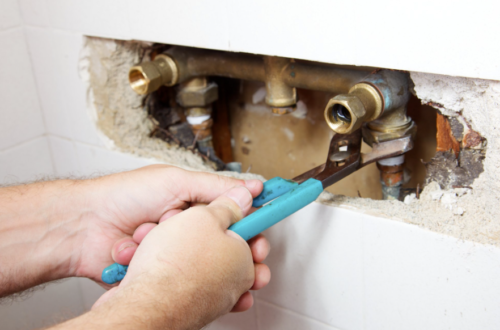DIY Water Heater Repair: A Step-by-Step Guide to Fixing Common Issues
Water heaters are an essential component of our everyday lives, providing us with hot water for bathing, cleaning, and other household activities. However, like any other appliance, water heaters can experience issues over time. Instead of immediately calling a professional plumber and spending a significant amount of money on repairs, many common water heater problems can be fixed with a little DIY knowledge and effort. In this comprehensive guide, we will take you through the step-by-step process of repairing common water heater issues, saving you time and money.
1. No Hot Water
One of the most common issues homeowners face with their water heaters is the absence of hot water. Before diving into the repair process, it’s important to determine the cause. Here are a few possible reasons:
- Thermostat Setting: Check the thermostat setting on your water heater. It should be set to a temperature that provides hot water.
- Power Supply: Ensure that your water heater is receiving power. Check the circuit breaker or fuse box to see if there is a tripped breaker or blown fuse.
- Heating Element: If the thermostat and power supply are functioning correctly, there may be an issue with the heating element. You may need to replace a faulty heating element to restore hot water.
If you are unsure about how to check or replace the heating element, it is recommended to consult the manufacturer’s manual or seek professional assistance.
2. Inadequate Hot Water
Another common issue is when your water heater is not providing enough hot water. Here are a few potential causes and solutions:
- Sediment Build-up: Over time, sediment can accumulate at the bottom of the water heater tank, reducing its efficiency. Flushing the tank to remove the sediment can help improve hot water production.
- Undersized Water Heater: If your water heater is too small for your household’s hot water demands, you may need to consider upgrading to a larger capacity unit.
- Malfunctioning Dip Tube: The dip tube is responsible for directing cold water to the bottom of the tank. If it is broken or worn out, cold water may mix with hot water, resulting in inadequate hot water supply. Replacing the dip tube can solve this issue.
Always follow the manufacturer’s instructions while performing any maintenance or repair tasks on your water heater.
3. Leaking Water Heater
A leaking water heater can be a cause for concern as it can lead to water damage and potential safety hazards. Here’s what you can do if you notice a leak:
- Identify the Source: Determine the location of the leak. It could be from the temperature and pressure relief valve, drain valve, or the tank itself.
- Tighten Connections: If the leak is coming from a loose connection, use a wrench to tighten it. Be careful not to overtighten and damage the fittings.
- Replace Faulty Valves: If the temperature and pressure relief valve or drain valve is faulty, it may need to be replaced. Consult the manufacturer’s manual or seek professional assistance for proper valve replacement.
- Replace the Tank: If the tank itself is leaking, it is recommended to replace the water heater entirely. Contact a professional plumber to handle this task.
Remember, addressing a leaking water heater promptly can prevent further damage and potential hazards.
4. Rusty or Discolored Water
Discovering rusty or discolored water flowing from your faucets can be alarming. Here are a few steps to troubleshoot and resolve this issue:
- Check the Source: Fill a glass with cold water from the tap and inspect its color. If the discoloration is only present in hot water, the issue is likely with the water heater.
- Flush the Tank: Sediment and rust particles can accumulate in the water heater tank, causing discoloration. Flushing the tank can help remove these impurities. Follow the manufacturer’s instructions for proper flushing techniques.
- Anode Rod Replacement: The anode rod is designed to attract corrosive elements and protect the tank from rusting. If it is severely corroded, replacing it can help improve water quality.
If the issue persists or you are uncertain about performing these tasks, it is advisable to seek professional assistance.
FAQs
Q: Can I repair my water heater myself?
A: Yes, many common water heater issues can be repaired by homeowners themselves. However, it is important to ensure your safety and follow proper guidelines. If you are unsure or uncomfortable with DIY repairs, it is best to consult a professional plumber.
Q: How often should I flush my water heater?
A: Flushing your water heater once a year is generally recommended to remove sediment and maintain its efficiency. However, homes with hard water may require more frequent flushing to prevent build-up.
Q: Is it normal for my water heater to make noise?
A: Some noise is expected during the heating process. However, loud banging or rumbling noises could indicate sediment build-up or other issues. Flushing the tank may help alleviate the noise, but if it persists, it is advisable to consult a professional.
For more in-depth information on DIY water heater repair, you can refer to this helpful article that provides additional insights and tips.
By following this step-by-step guide and tackling common water heater problems on your own, you can save money and gain a sense of accomplishment. However, always prioritize your safety and consult a professional if you are unsure about any repair or maintenance task.






